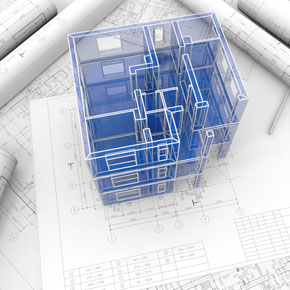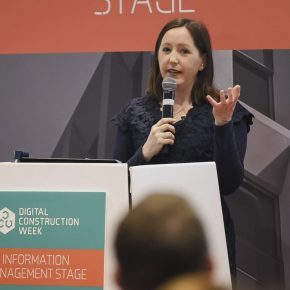
Why Building Information Modelling (BIM) is on the rise
By April 2016, the use of Building Information Modelling (BIM) by UK construction, engineering, and architectural companies had risen by 13%, indicating BIM’s rise to mainstream use.
But why, after decades of relying on 2D drawings, are individuals and businesses making the switch? Raised Flooring Solutions finds out more…
BIM is a process which can be used to plot out every component of a building’s lifespan, from design to conception. At its most basic, BIM can be understood as a digital representation of the physical and functional characteristics of places and objects.
These digital models can be manipulated and altered to design and develop a construction project. The software also allows for collaborative adjustments, making in-house architectural or engineering teams much more efficient.
In short, BIM reduces friction within a project, allowing for both time and budget savings.
Design rehearsal
More often than not, construction projects have to adapt to challenges uncovered in the development phase.
With traditional 2D drawings, a snag in the process means lengthy re-designs, which, in turn, costs the company time and money. Using BIM, a building design can be easily rehearsed: if there is an issue in its design, it can be knocked down and reworked, or readjusted on the fly.
Collaborative work
One of the key benefits of BIM is collaborative design and implementation. Every project contains varying disciplines – from furniture design teams, through to the final construction team.
With BIM, these varying pods can work collaboratively, annotating projects with suggestions as they go. This cross-information of knowledge and expertise reduces the number of challenges that occur during a project.
The collaborative approach also ensures a much higher standard of finish with each project, thanks to consistent honing from each expert team that is involved.
Track your changes
A design process creates many iterations of one project. Engineers and architects could go through as many as 100 different designs before settling on the best suited. But what if they wanted to go back and tweak an earlier iteration? BIM can help track changes, allowing a designer to switch back and build on an early design.
Aids like autosave also exist within BIM software, safeguarding the user against file corruption, which could hamper a project’s development time.
Simulation
One of the biggest drawbacks of 2D drawings is the inability to visualise and simulate real world elements, such as sunlight or energy performance.
BIM software can intelligently interpret where the sun may be in varying seasons, and simulate elements that are otherwise impossible on paper. This complimentary function gives designs and concepts a much deeper base of information, informing further design iterations.
Specify each phase
Once a model is complete, it will contain several sub-models, each of which details the varying elements of design and construction.
Within these sub-models, steps, materials, crew numbers, and other factors are shown for that specific phase of construction, helping project managers to navigate every step of a construction project in detail.
Presenting
A BIM model is the ideal way to present all the aspects of a project, including its scope, the components required, and the outcome.
Because it is all digital, only a few simple steps are required to create detailed fly-throughs and rotations of the final building, which can then be used to apply for planning permissions or sell space within the building.
There is no denying that Building Information Modelling is picking up traction throughout the UK, and it may be, in the not-so-distant future, that 2D drawings are a thing of the past. BIM poses competition a little too stiff for traditional design methods to ever compete.
Latest news

8th April 2025
First look at industry speakers for GEO Business 2025
GEO Business, the UK’s premier geospatial event, is set to return to ExCeL London on 4 – 5 June 2025, bringing together the brightest minds in the industry.
Posted in Articles, Building Industry Events, Building Industry News, Building Products & Structures, Building Services, Exhibitions and Conferences, Information Technology, Innovations & New Products, Restoration & Refurbishment, Retrofit & Renovation, Seminars
8th April 2025
Digital Construction Week 2025 announces first wave of industry-leading speakers
Digital Construction Week (DCW), the UK’s premier event for digital innovation in the built environment, is set to return to ExCeL London on 4 – 5 June 2025.
Posted in Articles, BIM, Infrastructure & CAD Software, Building Industry Events, Building Industry News, Building Products & Structures, Building Services, Building Systems, Civil Engineering, Exhibitions and Conferences, Hard Landscaping & Walkways, Health & Safety, Information Technology, Innovations & New Products, Landscaping, Retrofit & Renovation, Seminars
7th April 2025
Abloy UK provides bespoke access control solution for CPA Group’s Lanarkshire HQ
Abloy UK has supplied CPA Group with its PROTEC2 CLIQ solution to streamline access control and protect assets at its headquarters in Shotts, Lanarkshire.
Posted in Access Control & Door Entry Systems, Architectural Ironmongery, Articles, Building Industry News, Building Products & Structures, Building Services, Case Studies, Doors, Facility Management & Building Services, Health & Safety, Restoration & Refurbishment, Retrofit & Renovation, Security and Fire Protection
7th April 2025
ASSA ABLOY EMEIA: A new generation of reader is added to the Aperio digital access family
There is now a way to control access digitally, effectively and wire-free, thanks to ASSA ABLOY EMEIA…
Posted in Access Control & Door Entry Systems, Architectural Ironmongery, Articles, Building Industry News, Building Products & Structures, Building Services, Doors, Facility Management & Building Services, Health & Safety, Information Technology, Innovations & New Products, Posts, Retrofit & Renovation, Security and Fire Protection
 Sign up:
Sign up: